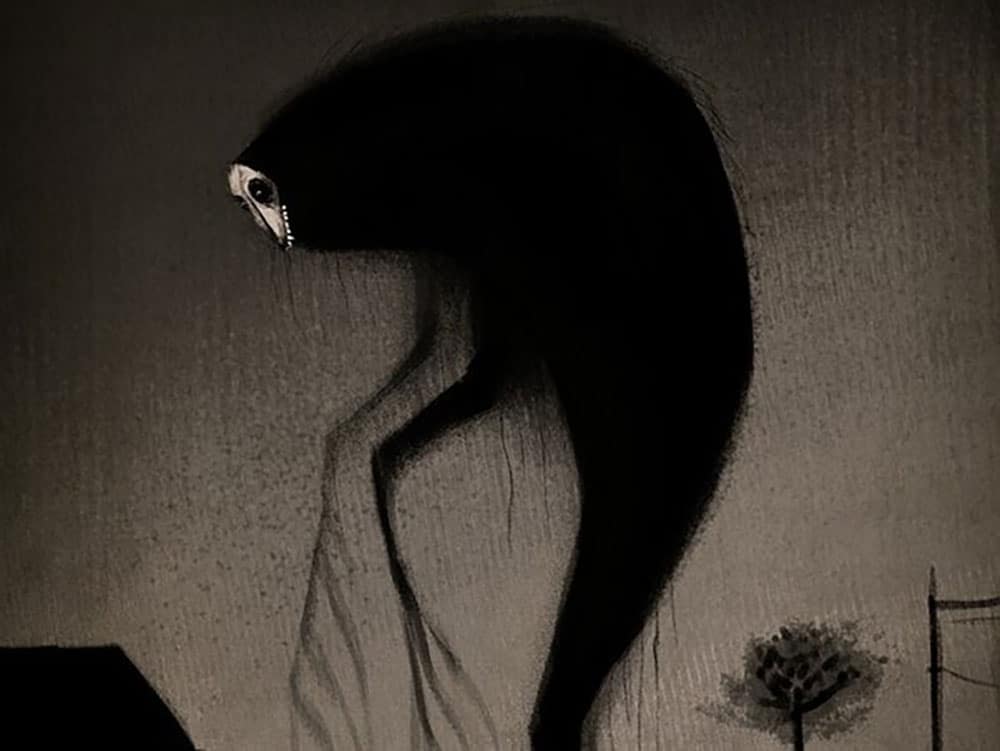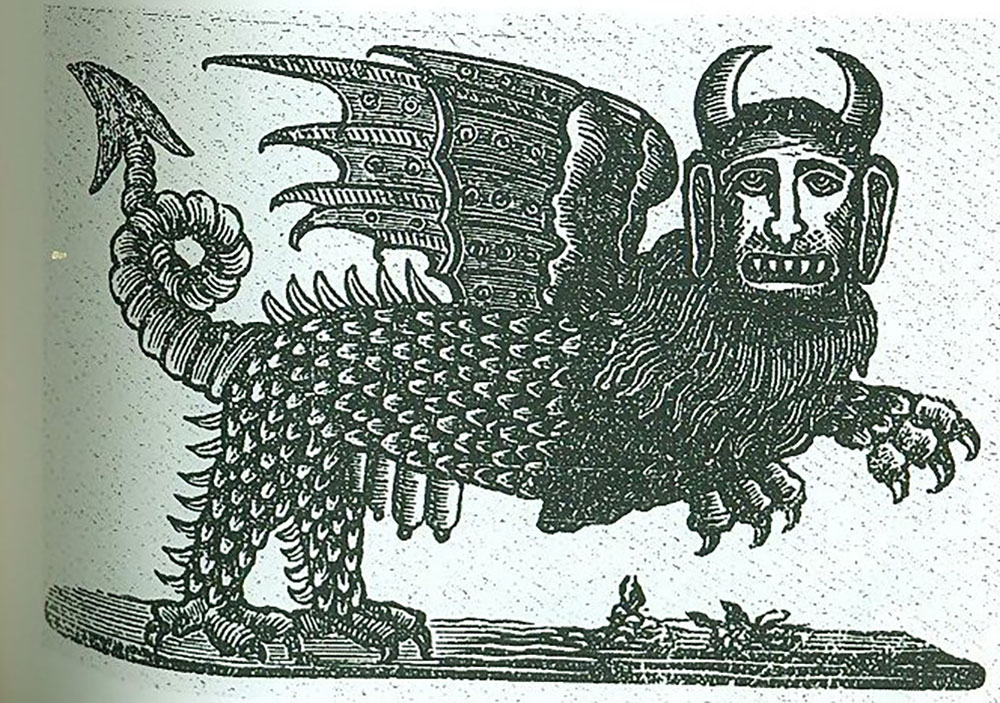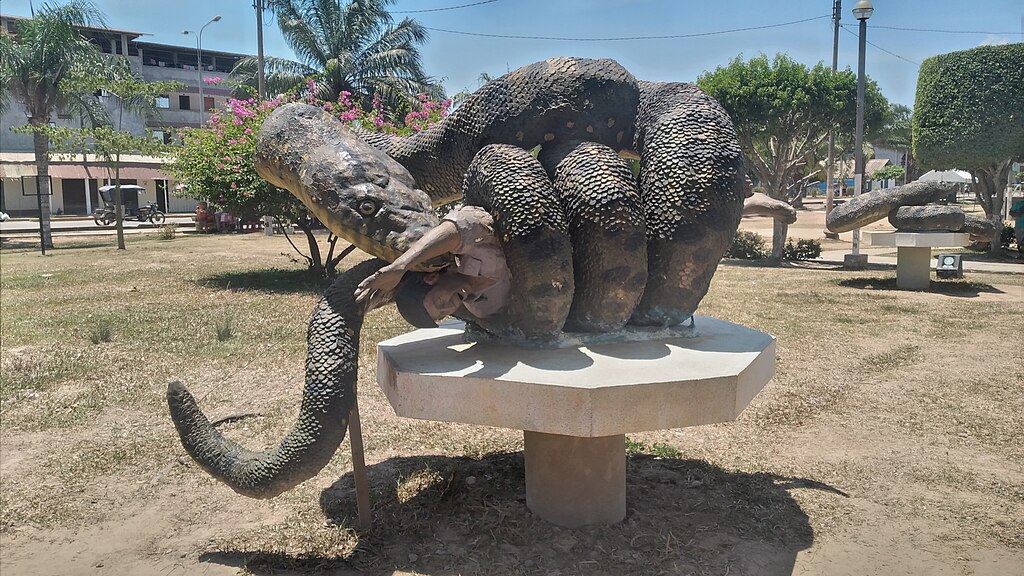If you only know the mythical monsters in your neck of the woods, these seven Latin legends will give you new fuel for your nightmares.

As a biracial horror fan, I feel I owe it to myself and others to explore some of the well-known and lesser-known cryptids, creatures, curses, legends, and myths present in Latin American folklore and oral history. We are familiar with these myths and monsters created by the culture on our continent, but lurking elsewhere are beings as vicious as any urban legend.
From a young age, I found that my culture was steeped in tradition, ritual, and superstition. After some uncanny happenings around our old, tiny apartment back when my Abuela was alive, I apparently said things so accurate and disturbing that it led her to tell my mother I had a connection with the dead. It still kind of shakes me.
My family is not immune to the idea of spirits or curses carrying on, and the dozens of monsters and ghosts I came across in my search were as variable as they were intriguing.
You won’t see many of these in a movie, and if you do, it’s probably less frightening than the history and stories told straight from the source of these legendary Latin beings.
1. El Cuco (Spain)

Also known as el Coco, Cucuy, Cuca, and more (Cucuy is a male figure, and Cuca is the female version of the legendary being), this mythological being is a spirit-like monster, a Latin American equivalent found in Spain and Portugal to match the mainstream Boogeyman.
Threatened with the same punishment we all were if we didn’t go to bed on time, disobedient children were warned that El Cuco could come and take them away in the night. In Portugal, Spain, and parts of Latin America, parents would sometimes “invoke” the Coco to discourage bad behavior from their children, singing lullabies or rhymes warning that where misbehavior occurs, the Coco will follow.
While its appearance varies in each gender, and some accounts of lore say that “Coco” refers to the skull, insinuating a skeletal-like appearance, descriptions from Brazilian folklore say that the Cuca can be pictured as a humanoid alligator. The Portuguese more readily applied the term “dragon” to the being.
Its appearance isn’t what haunts children, though; it’s the expeditious and horrible method by which El Cuco claims children that put them to bed.
An abductor and child eater, el Cuco sounds a lot like the Latino version of Sinister’s title villain, who also happened to be referenced as “Mr. Boogie.” El Cuco comes in the night and could devour a child or, worse, take the spirit of the child away to a place of no escape.
Nursery rhymes to drive away instead of invoke were discovered as early as the 17th century in the works of Juan Caxés. Here is the translation I’ve found of one of the earlier rhymes created to warn children away from this specter:
“Sleep child, sleep or else… Coco will come and eat you. Leave Coca. Leave Coca. Go to the top of the roof. Let the child have a quiet sleep.”
A cultural twist on the ubiquitous “boogeymen” of horror, el Cuco stands at the threshold of children’s nightmares, daring them to misbehave and disrespect their elders’ warnings.
2. El Chupacabra (Puerto Rico, The Americas)

“El Chupacabras” by Pablo Spekuljak is licensed under CC BY 2.0.
Perhaps the most famous cryptid or creature on this list, El Chupacabra, is one of the most ubiquitous Latin folklore tales in modern history.
With a name that directly translates to “goat sucker,” first sightings of the creature began coming out of Puerto Rico in 1995, and hysteria about the beast spread with reports coming as far north as Maine and as far off as Chile, demonstrating the results of mass panic over the unknown.
Most Latin cultures have different concepts of El Chupacabra’s appearance compared to its American counterpart. In Hispanic culture, El Chupacabra is generally said to appear as a heavy, reptilian in nature, approximately the size of a small bear, with an intimidating row of spines running from its neck to the base of its tail. In North America, the southwest states, including New Mexico and Colorado, tell a different story of a more canine-like creature, which was quickly disproven as sightings of canids (a carnivorous relative of the dog) affected by mange.
A relatively new addition to the list of monsters, seeing it was less than 30 years ago that the sightings began, this urban legend was too irresistible to let go of.
El Chupacabra’s origins began in the 1970s when a rash of livestock killings plagued a small town in Puerto Rico. The reason these animal deaths drew so much attention was that, according to witnesses who saw the corpses, it appeared the animals had been drained of blood through multiple small puncture-like wounds.
The 1990s would be the first time a series of animal killings would be attributed to El Chupacabra. After almost a dozen sheep were found drained of blood in a small Puerto Rican town, a few months after this attack, a witness came forward to say she had seen a creature lurking in the town where there were approximately 150 reports of animal killings.
A thrilling concept to consider, El Chupacabra is still, unfortunately, tabloid fodder and one of the only horror-based Latin cryptids to grab and hold our attention and hold it.
3. El Culebron (Chile)

A familiar tale to the people of Chile, El Culebron is a monstrous entity with frightening capabilities.
Supposedly dwelling in the rural areas of Chile, the beast is known to attract travelers, and you won’t be surprised to find someone advising you away from the areas these creatures are known to inhabit. Lore tells of travelers, merchants, and hikers being attacked in areas where the serpent-like monster is known to hide.
In its base form, El Culebron takes the form of a gigantic snake with a distinctive head in the form of a calf.
If this abstract and creepy description isn’t enough, the thing that makes El Culebron so deadly is its ability to shapeshift into what children fear most.
Legends also say that El Culebron is attracted to wealth, especially newly buried wealth.
Supposedly, if you can capture one of these beings, it is said that you, too, can attract wealth — but capturing is much harder to do. A ritual involving milk and hair is needed to spawn your own Culebron, a strange combination, but this is old magic.
Elusive, aggressive, and adaptable, El Culebron is one of Chile’s most infamous monsters.
4. Duende (Spain, Central America)

Cultures all refer to “little people,” whether sprites or pixies, tiny beings that have inhabited our minds for centuries.
Duende is a term that refers to an elf, gnome, or pixie-like creature, short in stature, usually appearing as a child with the face of an older man. Various different types of Duende behave differently than other iterations of the creature, with some names for the sects being Enanos (dwarves in English), Nuberos, said to control the weather, and Trasgos, the most hated and mischievous Duende that can slip into and invade your home.
The superstition goes that if you’re alone and approached by a beggar, it’s best to be charitable. Should the person who asked for your assistance be denied and turn out to be a Duende, you can count on personal misfortune.
It goes to show a little respect can go a long way, even for otherworldly creatures.
Much like gnomes and nymphs, though, Duende seems to be attracted to particular areas in nature, and leaving gifts and offerings is one way to ensure you won’t be cursed with misfortune or plagued by these creatures.
Their similarities to other beings and the accounts of similar beings in different countries could almost be enough to make you wonder what might be dwelling in the covered forests.
Mostly harmless besides a bit of mischief, Duende is probably the smallest (literally) problem on this list.
5. Yacumama (Peru)

GAVOX GUERRA, CC BY-SA 4.0 <https://creativecommons.org/licenses/by-sa/4.0>, via Wikimedia Commons
With a name that translates to “mother of water,” Yacumama is one of South America’s largest monsters and another serpent on our list.
Supposedly 60 meters in length, this legendary beast is said to make its home in the Amazon River basin or can be seen hunting in the water. One of the most prominent monsters in South American folklore, people from Paraguay, Argentina, and Brazil all know the story of Yacumama and take great precautions to respect her.
She is the guardian of the water, and no mortal can escape her wrath should it be invoked.
Legends tell of indigenous people watching the spectacle of Yacumama devouring her prey; these tales spawned rumors of missing fishermen and vessels, creating a more modern version of the tale.
Sightings are rare to none, with only one notable account marked in the 1900s when 2 men aboard a ship attempted to detonate explosives in the river to kill the beast. After detonation, a snake supposedly rose from the water, bloodied but alive, swimming off and leaving the two men petrified.
Like Loch Ness, this serpent could just be another unsolved mystery, but in case it’s not, if you ever find yourself next to a river, thank Yacumama for guarding the water, just in case.
6. La Ciguapa (Dominican Republic)

A version of the historic siren that draws men to their deaths, La Ciguapa is a female being rooted in Dominican folklore.
Described as having a female form with discolored skin, backward-facing feet, and long manes of hair covering their bodies, they are supposedly nocturnal and inhabit the highest mountains in the Dominican Republic.
These creatures are a complex mixture of horror and beauty; some find them irresistible, while others are taken aback by their unnatural presentation.
Beautiful and ethereal, they are compared to mermaids in that, during the night, a Ciguapa could seduce a traveler on an evening journey only to murder them after having been intimate.
There’s not much evidence to support that these female figures are benevolent in any way, and the concept of tracking or capturing them gets murky as their backward-facing feet make their tracks difficult to follow.
A creepy take on the common siren lore, La Ciguapa is a once-in-a-lifetime beauty you can afford to miss unless you’re ready for that moment of beauty to cost you your life.
7. La Llorona (Mexico)

Vying for the most popular legend in Latin history alongside the Chupacabra, La Llorona, or “The Crying Woman,” is a long-standing legend in Mexican culture that has spawned countless films on the topic.
Known to be a merciless spirit that dwells by bodies of water, it’s said she sits beside the water mourning the death of her children, whom she drowned in a hysterical fury after discovering her husband was having an affair. Now, La Llorona takes her grief and pain out on others.
Documentation of La Llorona began early, with the first traces of her origins being found in 1550 in Mexico City. While she is more known among Mexicans, Americans, and other South American countries, she also seems to have some connections to the Aztecs.
She can be tied to legends such as “The Hungry Woman,” who similarly wails as La Llorona does only for food.
Additionally, she can be associated with the Aztec goddess of motherhood.
These historical and maternal connections are beautiful, but we must remember the folklore and La Llorona’s true nature. A harbinger, La Llorona often signals misfortune for those who see her. Bad luck, misfortune, and even death can follow you after being marked by this spirit.
While I know this story has been told poorly too many times, I still think La Llorona deserves its place as one of the most famous and impactful Latin oral folktales warning about the dangers of the dark, open water, and especially strangers.














Follow Us!